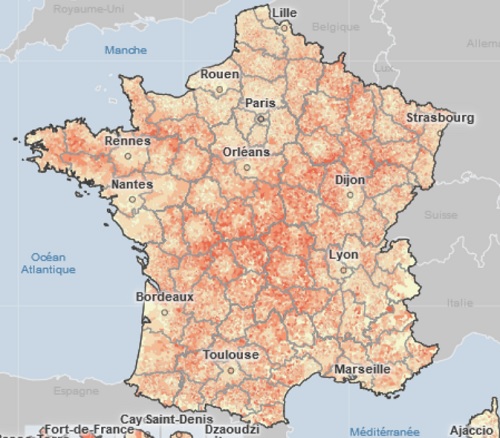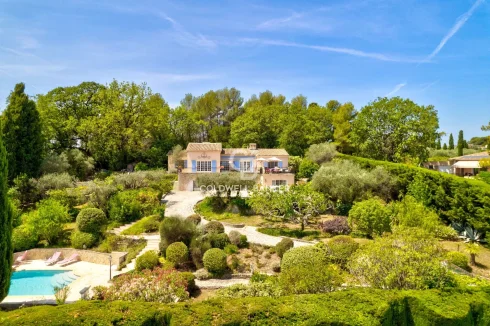Empty Homes in France
Friday 06 July 2018
The housing stock in France is increasing at a faster rate than the population, resulting in a rise in the number of empty properties.
One of the main characteristics of the French housing market is the high number of new homes that are constructed each year.
In a recent study, Insee, the national statistics office, state that an average of 374,000 new homes were built each year between 2010 and 2015 (290 000 between 1990 and 1999 and 364 000 between 1999 and 2010).
That is around twice the size of the UK annual house-building programme and the largest housing programme per inhabitant in Europe.
It is also over twice the rate of the increase in population each year; over the same period the population of France grew annually by 0.5%, whilst the number of new homes constructed was up by 1.1%.
Insee state that to meet the needs of population growth, an increase around 140,000 new homes a year were needed.
In addition, a further 105,000 homes were needed to accommodate the growing number of smaller households arising from divorce, people staying single for longer, the increase in the number of single-parent families, and the increase in life expectancy.
Finally, around 41,000 new homes each year were added to the second homes market – holiday homes and those used for professional reasons.
That meant that each year between 2010 and 2015, the number of vacant dwellings increased annually by around 87,000 units, equivalent to 23% of the number of additional dwellings over the period.
Vacant housing has also been increasing at a faster rate. Their number grew by 3.4% per year on average between 2010 and 2015, a growth rate 2.5 times higher than between 1999 and 2010 and 6 times higher than between 1990 and 1999.
As a result, in 2015 2.8 million housing units were vacant, equivalent to 8.0% of the housing stock. This share has risen steadily since the late 1990s (6.9% in 1999 and 7.2% in 2010), thus ending a continuous decline during the 1980s and 1990s (7.6% in 1982 and 7.2% in 1990).
Comparable figures from the UK are not readily
available, but published figures show that there are around 600,000
empty homes in England (2.5% of stock), of which around 200,000 are long-term vacant.
The Insee study does not provide information on the length of time the properties have been empty, and a proportion of the vacancies will be short-term, due to renovation or in the process of sale. Others may also be vacant due to the often interminable delays that occur with the inheritance process in France.
However, the vacancy rate in many areas of the country is such that it cannot be explained by the normal operation of the market. In 17% of communes over 20% of the housing stock is empty.
The graphic below shows a map of the country with those areas with the highest percentage of empty properties marked in red. The Centre, Massif Central and Grand Est are most affected, but there are also significant vacancy rates in Normandy and Brittany.
Indeed, drill down into the stats to a municipal level, and high vacancy rates can be found in most parts of the country. We will endeavour to say more about specific geographic areas in a future Newsletter.

A great deal of the support for the large house-building programme in France
is based on a frequently reported figure by charitable organisations that there are around 3 million
households living in unsatisfactory housing.
However,
in many cases
this is because of the poor condition of the property, where the
solution is frequently renovation, not new construction. That is not an
approach that appeals to the powerful construction lobby in France.
Related Reading:
Thank you for showing an interest in our News section.
Our News section is no longer being published although our catalogue of articles remains in place.
If you found our News useful, please have a look at France Insider, our subscription based News service with in-depth analysis, or our authoritative Guides to France.
If you require advice and assistance with the purchase of French property and moving to France, then take a look at the France Insider Property Clinic.





